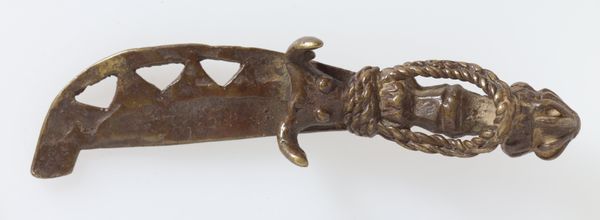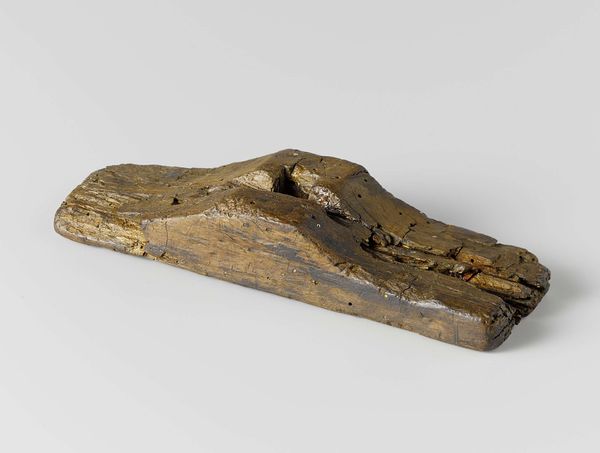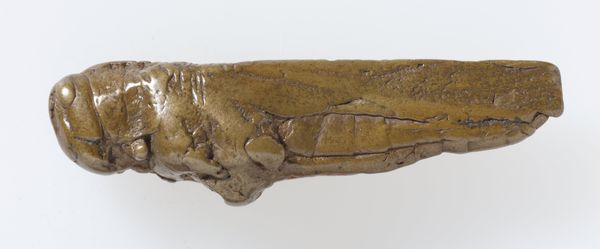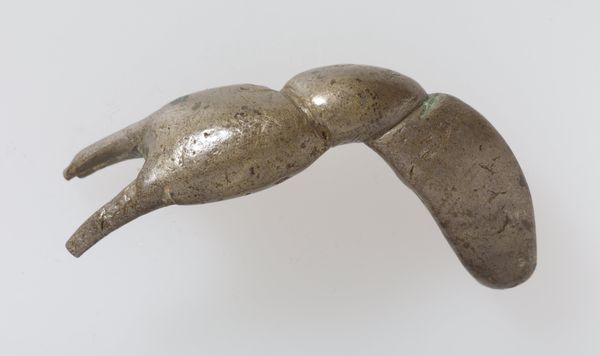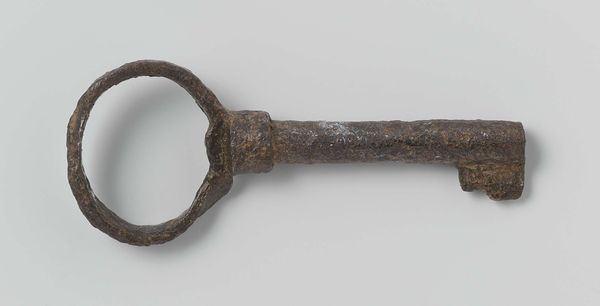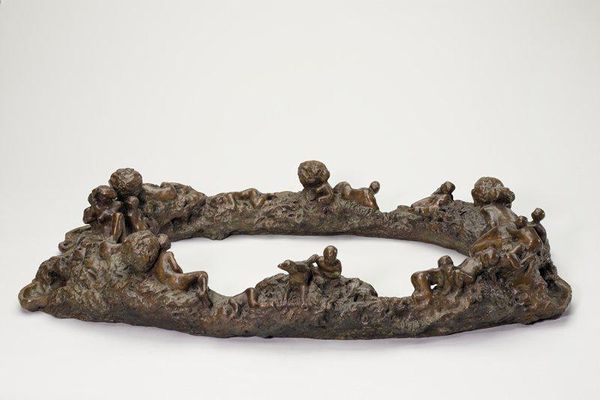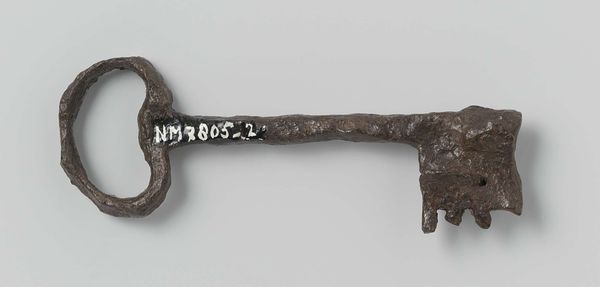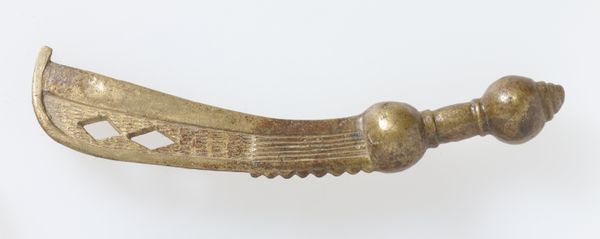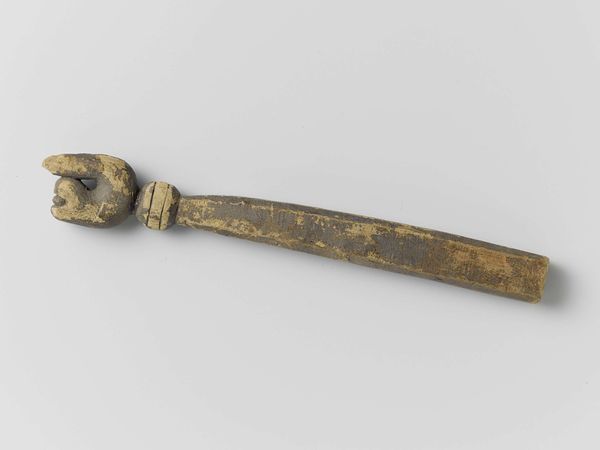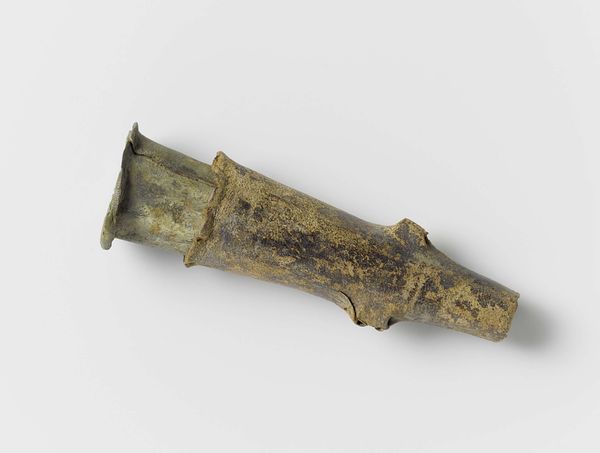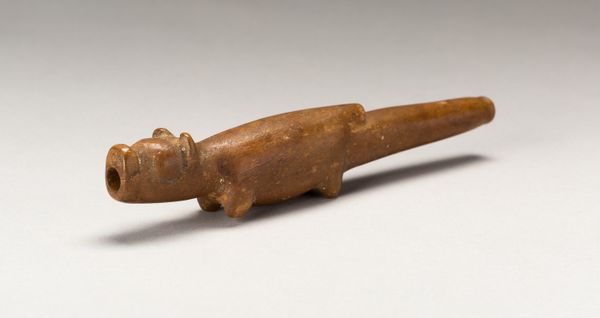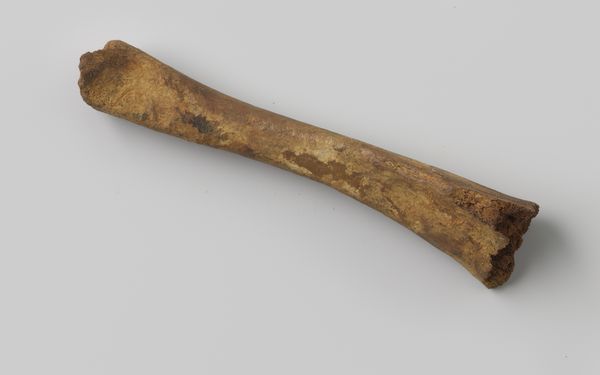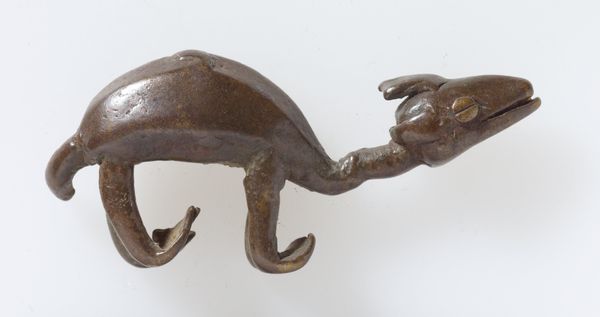![Goldweight [Gun] by Akan](/_next/image?url=https%3A%2F%2Fd2w8kbdekdi1gv.cloudfront.net%2FeyJidWNrZXQiOiAiYXJ0ZXJhLWltYWdlcy1idWNrZXQiLCAia2V5IjogImFydHdvcmtzL2JkYjllMDRlLTE4NWYtNDRiNi1iMzA4LWFhYTc5ZmJhNTYxZS9iZGI5ZTA0ZS0xODVmLTQ0YjYtYjMwOC1hYWE3OWZiYTU2MWVfZnVsbC5qcGciLCAiZWRpdHMiOiB7InJlc2l6ZSI6IHsid2lkdGgiOiAxOTIwLCAiaGVpZ2h0IjogMTkyMCwgImZpdCI6ICJpbnNpZGUifX19&w=3840&q=75)
brass, gold, sculpture
#
brass
#
sculpture
#
gold
#
sculpture
Dimensions: 9/16 x 2 1/4 x 7/16 in. (1.43 x 5.72 x 1.11 cm)
Copyright: Public Domain
Curator: We’re looking at an intriguing piece here at the Minneapolis Institute of Art. It's an Akan goldweight, specifically shaped like a gun, dating from the 19th to 20th century. The medium is brass. Editor: It’s quite small, I imagine? It possesses a sort of aggressive charm—the heavy materiality and dark golden color create an odd feeling for such a weapon. Curator: Yes, goldweights were typically small objects. The Akan people, notably the Ashanti, used these not as actual firearms, of course, but as units of measurement in trade. The gun shape itself speaks volumes about the socio-political landscape. Editor: It does present this curious duality, doesn't it? The sleek lines suggest violence but the weight and density signify a grounding, an intrinsic value that redirects from its aggressive potential. Are those figures sitting on top of it? Curator: Good eye. The ornamentation adds another layer. What appears to be a bird figure is added onto the piece. Such decorative motifs weren't just aesthetic. They served as proverbs or held cultural significance related to wealth, power, and social status within the Akan society. Owning this may signify strength through a symbol of western firepower as filtered through Akan eyes. Editor: So it embodies not just a literal measure of gold, but also symbolic weight—power and trade influence, encapsulated. How subversive. Its crude form and function offer commentary about the time. It's beautiful. Curator: Exactly, these objects illuminate the complexities of cross-cultural exchange. This small item speaks to so much more. The arrival of European firearms dramatically altered power dynamics. Its compact design belies its impact. Editor: This is where design embodies both function and deep significance. Even a purely aesthetic reading yields many possibilities of form, substance, and ornamentation—the formal features open windows to wider ideas of wealth and influence. Curator: It shows us that the smallest object can carry the largest of stories about cultural interaction and identity. It truly bridges local artistic tradition with the disruptive force of global trade. Editor: A potent reminder that form is never merely formal, especially when holding symbolic weight.
Comments
No comments
Be the first to comment and join the conversation on the ultimate creative platform.
